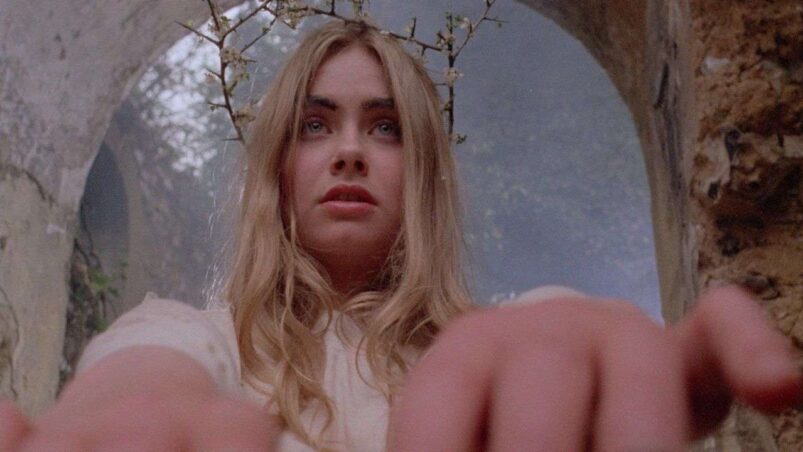The almost 3 hour and 15 minutes runtime of Woodlands Dark and Days Bewitched immediately makes you think “this is why documentaries aren’t comprehensive.” The feature documentary debut from celebrated author of House of Psychotic Women Kier-La Janisse makes clear with its runtime that it’s really only for those already highly invested in folk horror.
This is not an overview of the subgenre with special attention paid to specifically important films in the way that All the Colors of Giallo or Horror Noire are. This is a deep dive with extended discussions of old made for TV films and spoiler-filled analyses of everything from major touchstones for the subgenre to recently released and underseen international titles.
And this has its pros and cons. There are some incredible pieces of analysis, both about specific films and about the smaller subgenres within the larger folk horror umbrella. A wide variety of talking heads highlight the constant dread of the land taking revenge for the genocidal colonial violence perpetrated against indigenous peoples in North American folk horror, the idea that the hippies’ obsession with reconnecting with nature is just another form of invasion and colonization in late 60s folk horror, that Christian (and specifically Catholic) obsession with the seeming freedom of pagans stems from a repression in Christian dominant cultures, and much much more.
These ideas are all fascinating, and the discussions can be perhaps surprisingly academic with frequent use of words like “ontology,” “ethnographic,” and “psychogeography.” In fact the structure of the film itself seems somewhat academic as it’s broken into six parts, each of which focus on a different aspect, place of origin, or theme of folk horror. Though within and across these parts, films can be discussed, moved on from, and then discussed again 45 or even 120 minutes later as themes, concepts, and styles often overlap and influence one another. This then leads to the documentary feeling somewhat scattered, despite its best attempts to keep things organized.
This, combined with the genuinely massive amount of information included, makes it feel as though the documentary might better have been (or may still yet be, depending on what distribution deal it finds) better served as a mini-series more akin to AMC’s History of Horror and Secret History of Comics docu-series rather than a film with a runtime that’s more than double that of many of the films discussed in it.
And while there are moments in the film that are vital to discussions of folk horror, both in terms of historical context and deep analyses of recurring motifs within the subgenre, there are a number of sequences that feel overlong or even unnecessary. In particular there is a surprising amount of time spent discussing the recent American prairie set The Wind with its writer Teresa Sutherland and director Emma Tammi. It’s a film that’s picked out as an example of the underseen prairie horror story, but instead of simply citing it as an example (as happens with many films) the documentary spends nearly 5 minutes on it, showing clips and having the creators discuss how the film fits into the American folk horror landscape.
This segment highlights a few issues that come up throughout the film: some pieces feel like “coming soon” featurettes one might find on a DVD, there are films that get more attention (and screen time) than they deserve while others feel like they deserved more, and overall the documentary feels as though it could be purely vital if it were not so exhaustingly comprehensive.
And yet, the film is still full of indispensable moments and feels like absolutely necessary viewing for any fans of folk horror. I’ve been a fan of folk horror for nearly a decade now and I was introduced to new films I had never heard of, concepts that I am excited to explore more, and pieces of film and cultural history that feel essential to understanding the subgenre’s current cultural resurgence. The fact that throughout the film there are original animation and collage pieces, and that the talking heads are mixed with an incredible amount of clips from films across almost 100 years, also makes the visual experience a surprisingly dynamic and interesting one.
It’s a daunting film to sit down and watch, but if you are at all tempted to watch a nearly 3 hour and 15 minute long documentary on a subgenre of horror, then you’re the type of person who will be greatly rewarded by the many insights offered by Woodlands Dark and Days Bewitched.
Review screener provided.
READ NEXT: 10 Best Documentaries About Horror Movies You Should Watch
Some of the coverage you find on Cultured Vultures contains affiliate links, which provide us with small commissions based on purchases made from visiting our site. We cover gaming news, movie reviews, wrestling and much more.




